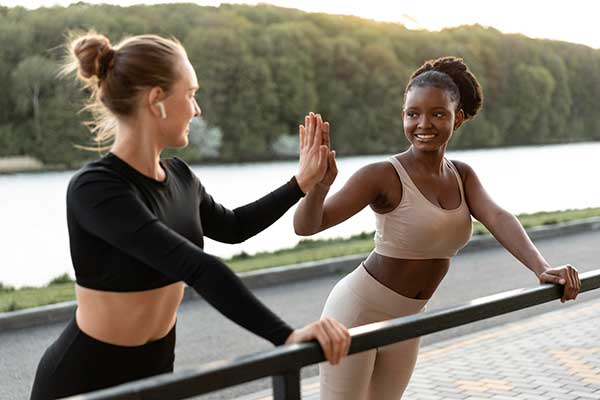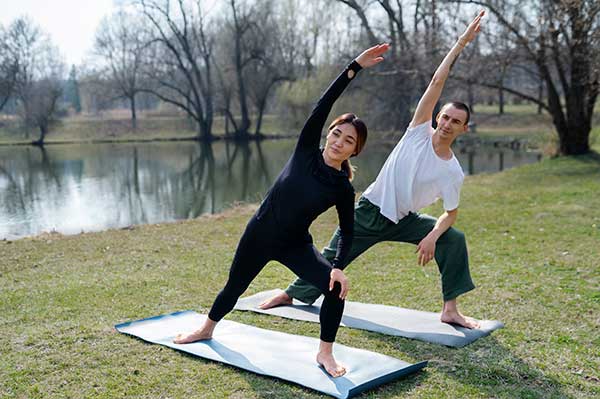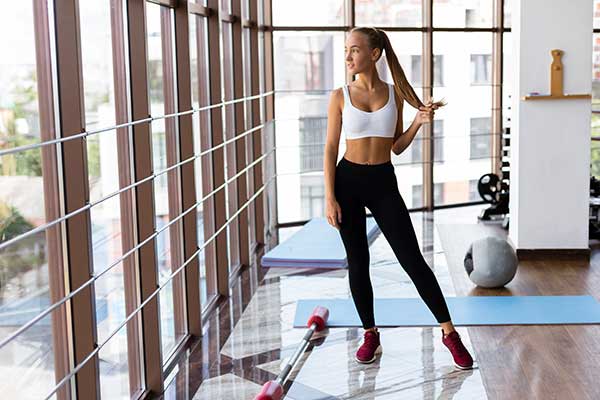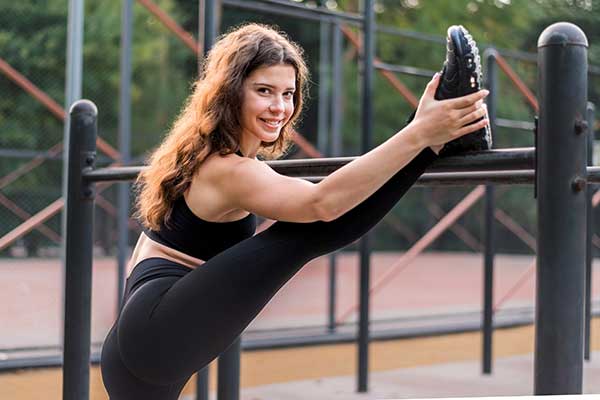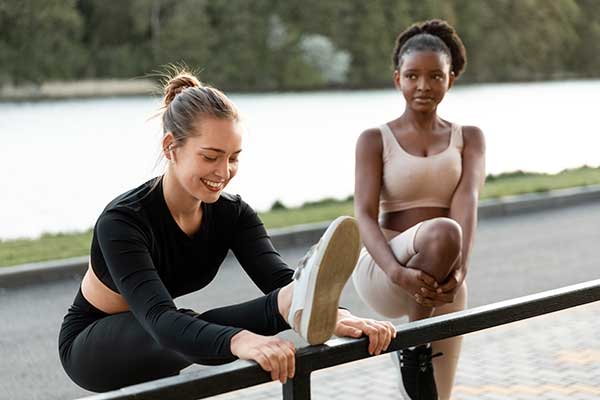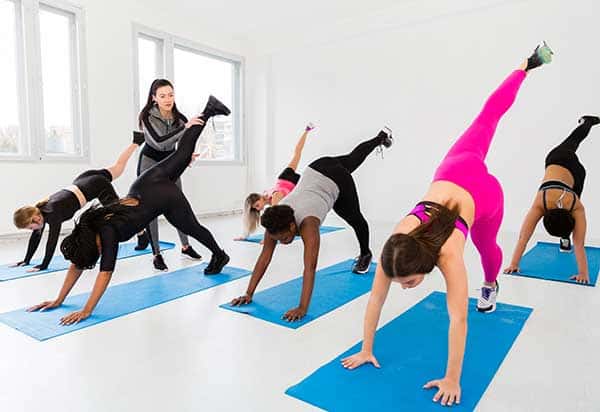Best Stretching Exercises After a Workout
After an intense workout, your muscles are pumped and ready to take on the world. But hold on—before you rush off to the shower or grab a post-workout snack, there’s one crucial step you shouldn’t skip: stretching. Many people overlook this essential part of their fitness routine, thinking it’s just an afterthought. However, incorporating some gentle stretches can make all the difference in how your body feels and recovers.
Stretching isn’t merely about flexibility; it plays a vital role in injury prevention, muscle recovery, and even improving overall performance for future workouts. So why not give your body that little extra care it deserves? In this article, we’ll explore various types of stretches and guide you through the best stretching exercises after a workout that will leave you feeling refreshed and rejuvenated!
The Importance of Stretching After a Workout
Stretching after a workout is often underestimated, yet it plays an essential role in your fitness journey. It helps to gradually lower your heart rate and allows your body to transition back to its resting state.
Muscles can become tight and tense after strenuous activity. Stretching alleviates this tension, promoting relaxation throughout the body. By elongating the muscles, you also enhance flexibility over time.
Incorporating post-workout stretches reduces the risk of injury by improving joint range of motion. This means better movement patterns for future workouts or daily activities.
Moreover, stretching aids in muscle recovery by increasing blood flow and oxygen delivery to tired tissues. This accelerates healing and reduces soreness that can linger for days after intense sessions.
Taking just a few minutes for stretching shows respect for your hard work while preparing you for what’s next on your fitness path.
Types of Stretches:
Stretching is not a one-size-fits-all approach. Understanding the different types can enhance your post-workout recovery.
Dynamic stretches are all about movement. They involve controlled leg and arm swings that mimic the movements of your workout, preparing your muscles for action and increasing range of motion. Think high knees or walking lunges before you wrap up.
Static stretches, on the other hand, focus on holding a position to lengthen muscles gradually. These should be done after workouts when your body is warm. Holding each stretch for 15-30 seconds helps in reducing tension effectively.
Active stretches require engaging opposing muscle groups while stretching specific areas. This not only increases flexibility but also improves balance and coordination as you actively engage multiple muscle sets simultaneously.
Incorporating a mix of these techniques can help maximize flexibility and overall performance after every workout session.
A. Dynamic Stretches
Dynamic stretches are an essential part of any workout routine. They help prepare your muscles and joints for the physical demands ahead. Unlike static stretches, dynamic movements involve active muscle engagement.
These stretches are typically performed in a controlled manner, enhancing blood flow to the areas being worked. Examples include leg swings, arm circles, and walking lunges. Each movement warms up specific muscle groups while also improving flexibility.
Incorporating dynamic stretching into your warm-up can elevate your performance during workouts. It enhances coordination and balance by activating multiple muscle chains simultaneously.
Adding these exercises not only helps prevent injuries but also sets a positive tone for your fitness session ahead. Embrace the power of dynamic stretching as you gear up for action!
B. Static Stretches
Static stretches are essential for promoting flexibility and relaxation after a workout. These stretches involve holding a position for an extended period, typically between 15 to 60 seconds.
The beauty of static stretching lies in its simplicity. By targeting specific muscle groups, you can effectively relieve tension built up during exercise. It’s about allowing your muscles to unwind and return to their natural length.
Incorporating static stretches into your post-workout routine can enhance recovery times. They help prevent stiffness while improving range of motion over time.
Whether you’re easing into a hamstring stretch or sinking into a deep quad stretch, focus on your breathing. This mindfulness adds another layer of benefit as it calms both body and mind.
Remember, the goal is not just to stretch but also to listen to your body’s signals during each hold. It’s all about finding comfort in stillness while nurturing your physical well-being.
C. Active Stretches
Active stretches involve movement and help improve flexibility while engaging the muscles being stretched. This dynamic approach can enhance your range of motion and prepare your body for various activities.
A classic example is leg swings, where you swing one leg forward and backward while standing on the other. This not only targets your hip flexors but also warms up the surrounding muscles.
Another effective active stretch is arm circles. By rotating your arms in a circular motion, you engage both shoulder joints and increase blood flow to that area.
Incorporating active stretches into your post-workout routine can elevate recovery. These movements keep your heart rate elevated slightly while promoting muscle elasticity without holding positions for long periods.
For those looking to maintain mobility, adding these exercises after workouts creates a seamless transition from intense activity to relaxation.
Benefits of Post-Workout Stretching
Post-workout stretching offers a wealth of benefits that go beyond just flexibility. It serves as a crucial component for muscle recovery, helping to alleviate soreness and stiffness.
When you stretch after exercise, you promote blood flow to your muscles. This increased circulation aids in delivering essential nutrients and oxygen needed for repair.
Stretching also helps maintain an optimal range of motion in your joints. This is vital for overall mobility and can enhance performance in future workouts.
Moreover, taking the time to stretch allows your body to relax. It reduces stress levels by signaling the nervous system to calm down after intense activity.
Incorporating post-workout stretches into your routine can lead to improved posture over time, which is beneficial whether you’re at the gym or sitting at a desk.
Top 5 Stretching Exercises:
Stretching is essential after a workout to promote recovery and flexibility. Here are five effective stretches you should incorporate.
The standing quad stretch targets your upper legs. Stand tall and pull one foot towards your glutes, feeling the lengthening in your thigh.
Next, try the seated hamstring stretch. Sit with one leg extended and reach for your toes. This will help alleviate tightness in the back of your legs.
For shoulder relief, do the shoulder and chest opener. Clasp your hands behind you while lifting them slightly to feel a gentle stretch across your shoulders and chest area.
Child’s Pose is perfect for releasing tension throughout the back. Kneel down, sit back on your heels, and extend forward with arms outstretched on the floor.
Downward facing dog combines strength with flexibility by stretching both the spine and hamstrings simultaneously while also engaging core muscles.
A. Standing Quad Stretch
The Standing Quad Stretch is a fantastic way to release tension in your thigh muscles after an intense workout. It helps improve flexibility and promotes better mobility.
To perform this stretch, stand tall with your feet hip-width apart. Bend one knee and bring your heel toward your glutes. Grasp your ankle with the same-side hand for support.
Keep your knees close together and push your hips slightly forward to feel a deeper stretch in the front of your thigh. Hold the position for 15-30 seconds while breathing deeply.
Switch legs and repeat, ensuring you maintain good posture throughout. This simple yet effective exercise can significantly help prevent tightness and soreness the following day. Incorporating it into your post-workout routine will enhance recovery and prepare you for future workouts.
B. Seated Hamstring Stretch
The Seated Hamstring Stretch is a simple yet effective way to release tension in your hamstrings. It’s perfect for those who spend long hours sitting or engaging in activities that tighten these muscles.
To perform this stretch, sit on the floor with one leg extended and the other bent so that the sole of your foot rests against your inner thigh. Keep your back straight as you lean forward over the extended leg. Reach toward your toes while maintaining a gentle bend in your knee if needed.
Hold this position for 15 to 30 seconds, focusing on breath control. Feel free to switch legs and repeat as necessary. This stretch can enhance flexibility and improve overall mobility.
Incorporating the Seated Hamstring Stretch into your post-workout routine helps prevent injury and eases muscle soreness. It’s an essential component for any fitness enthusiast looking to maintain balance in their training regimen.
C. Shoulder and Chest Opener
The Shoulder and Chest Opener is a fantastic stretch to relieve tension built up in your upper body. After an intense workout, your shoulders can feel tight, especially if you’ve been lifting weights or doing push-ups.
To perform this stretch, stand tall with your feet hip-width apart. Interlace your fingers behind your back while straightening your arms. Gently lift them away from the body and open up your chest. You’ll feel a delightful expansion across the front of the body.
Hold this position for about 20-30 seconds while breathing deeply. Focus on relaxing into the stretch as you exhale slowly. This helps release any pent-up stress and improves mobility in that area.
It’s perfect for anyone who spends hours sitting at a desk too! Incorporating it post-workout not only aids recovery but also enhances overall flexibility over time.
D. Child’s Pose
Child’s Pose is a gentle stretch that promotes relaxation while targeting the hips, thighs, and lower back. It’s perfect for winding down after an intense workout.
To get into this pose, start by kneeling on the floor. Sit back on your heels and extend your arms forward on the ground. Allow your forehead to rest softly against the mat.
As you breathe deeply, feel the tension melt away from your body. This position encourages deep breathing and helps release stress stored in tight muscles.
Hold Child’s Pose for at least 30 seconds or longer if it feels good. You can also modify it by placing a cushion under your torso for extra support.
Incorporating Child’s Pose into your post-workout routine enhances flexibility while providing a moment of mindfulness amid physical exertion.
E. Downward Facing Dog
Downward Facing Dog is a classic yoga pose that combines strength and stretch. It targets multiple muscle groups while promoting relaxation.
To perform this stretch, start on your hands and knees. Tuck your toes under and lift your hips towards the ceiling. Your body should form an inverted V shape. Keep your arms straight and push through your palms to open up the shoulders.
Hold this position for 30 seconds, breathing deeply as you sink deeper into the stretch. Feel free to pedal out your feet by bending each knee alternately, which can help release tension in the calves.
This exercise not only stretches the hamstrings and calves but also strengthens the arms and back. It’s perfect for winding down after an intense workout session.
Incorporating Downward Facing Dog into your post-workout routine will leave you feeling refreshed and rejuvenated, making it one of the best stretching exercises after a workout.
- About the Author
- Latest Posts
Johnnie D. Jackow Sr., the founder and CEO of Total Body Fitness, Worldwide, has a long-standing career in the fitness industry. He began as a certified personal trainer in the mid-90s and soon after authored his first weight loss book in 1998. This led to the launch of Total Body Fitness, Nationwide in the USA at the same time. Johnnie gained recognition as the fitness guru of his time, running infomercials on local TV late at night in Houston, Texas. Over the years, he has helped more than 40,000 individuals from all over the world achieve their health and fitness goals. With over 60,000 hours of documented training in integrative functional medicine, he completed his PhD in human physiology in 2010. His primary objective is to assist people in reaching their health and fitness goals through alternative approaches rather than relying solely on conventional medicine and pharmaceutical drugs. Today, with almost three decades of experience under his belt, Johnnie continues to be a leader in health and fitness.

